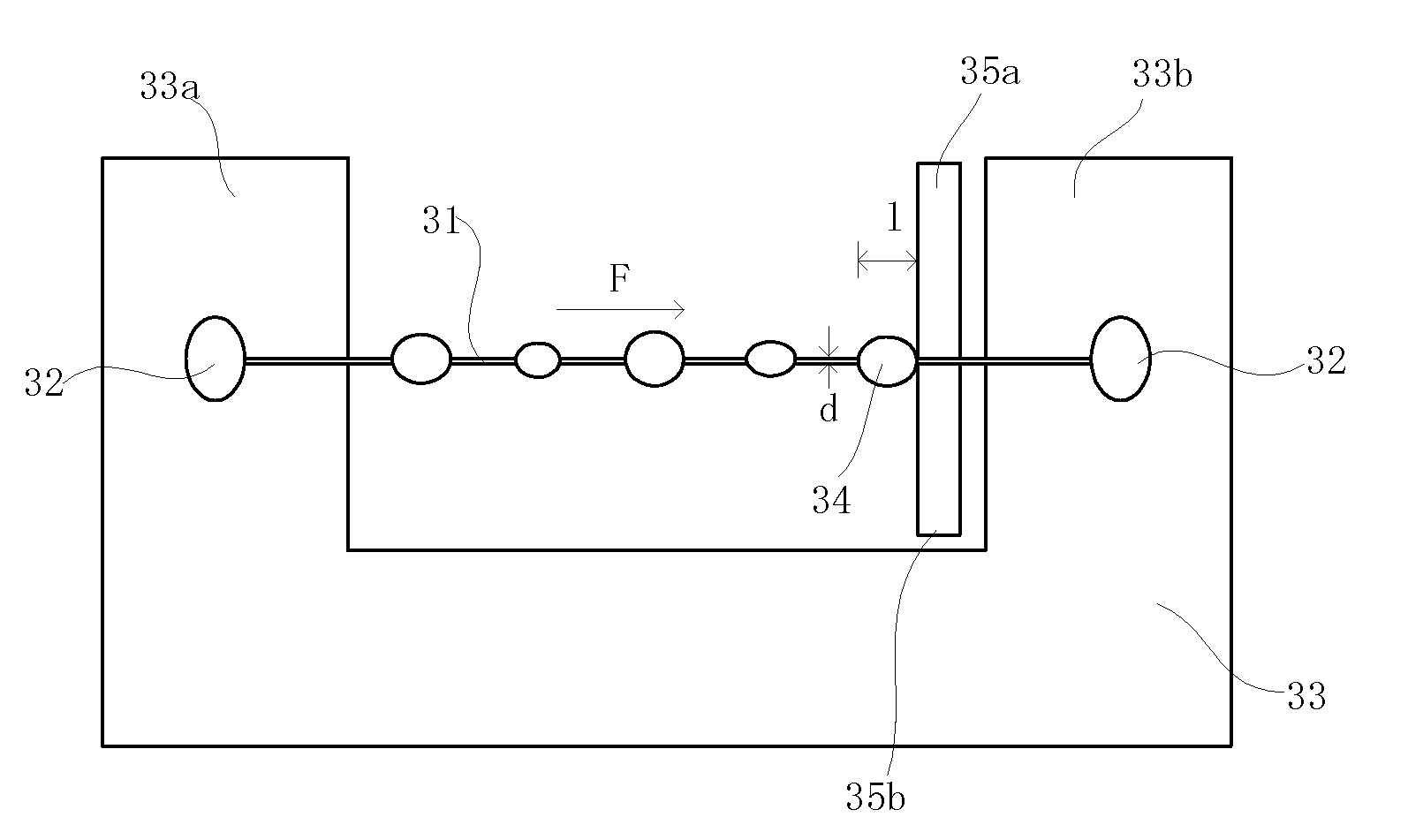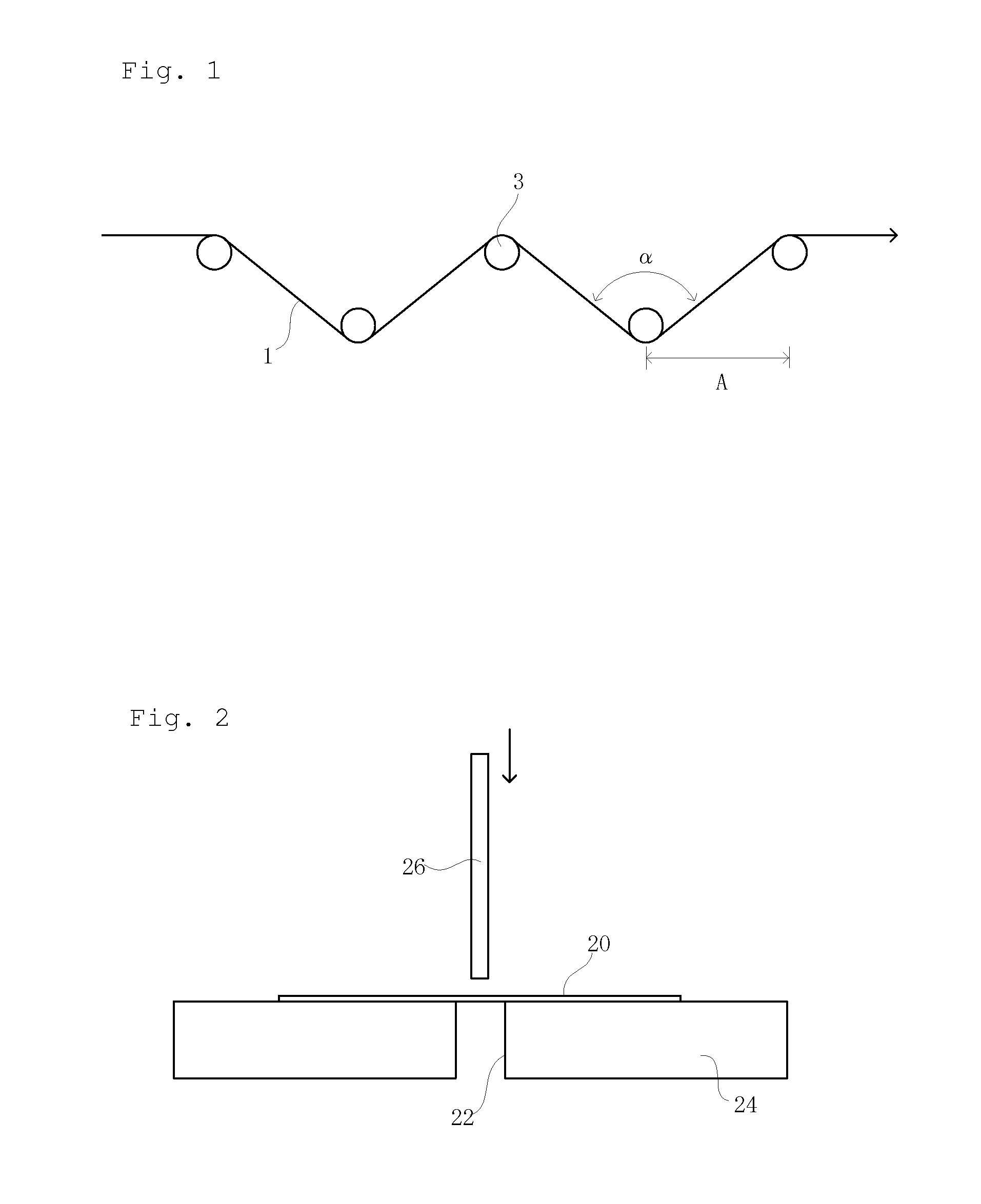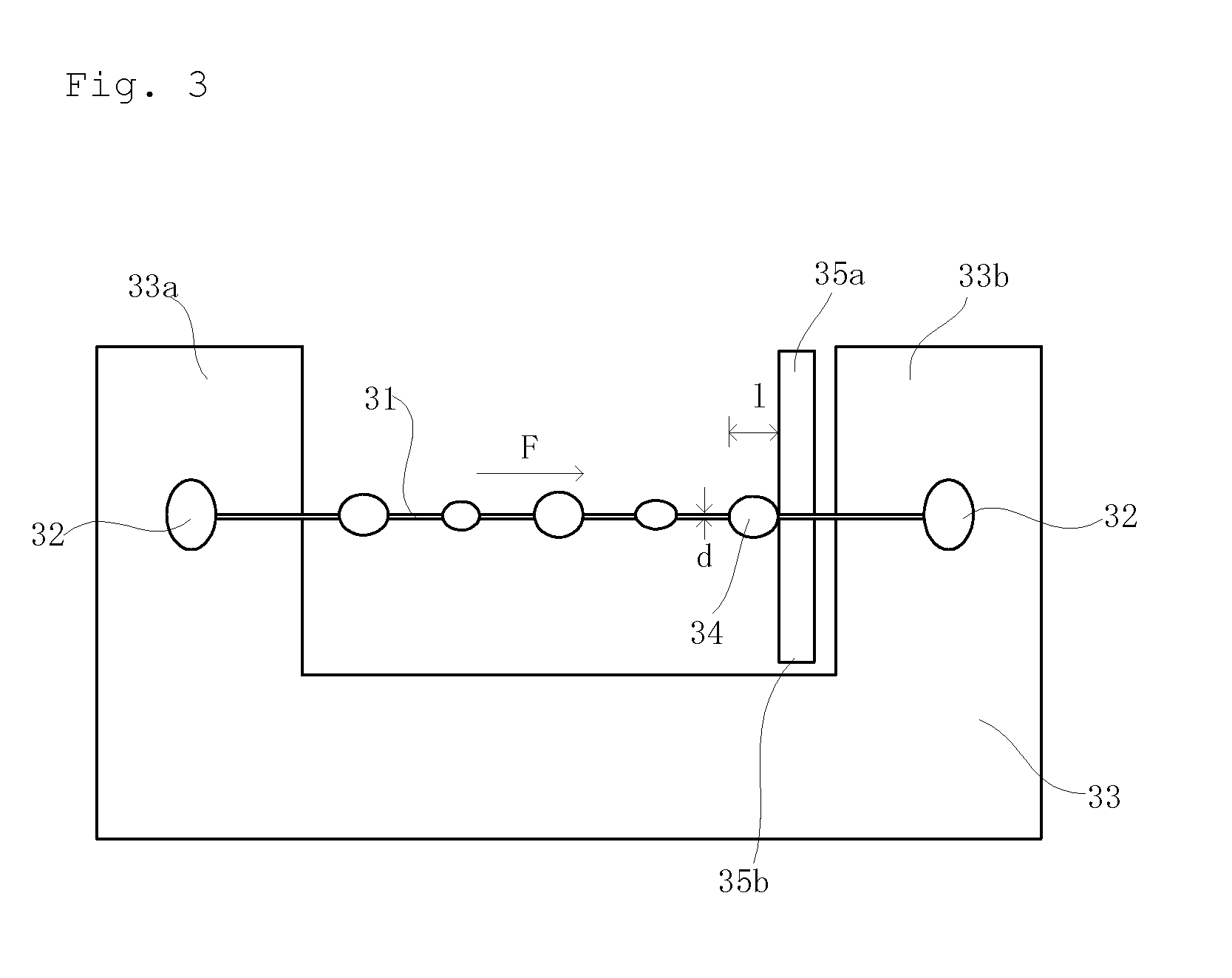Carbon Fiber Strand for Reinforcing Thermoplastic Resins and Method of Producing the Same
a technology of thermoplastic resin and carbon fiber, which is applied in the direction of fibre treatment, coatings, textiles and papermaking, etc., can solve the problems of low mechanical properties of carbon fiber, low sizing agent effect, and low mechanical affinity of carbon fiber-reinforced thermoplastic resin obtained by reinforcing polypropylene resin with carbon fiber, etc., to achieve high mechanical strength, no fluffing, and superior adhesion.
- Summary
- Abstract
- Description
- Claims
- Application Information
AI Technical Summary
Benefits of technology
Problems solved by technology
Method used
Image
Examples
examples
[0078]Sizing agent-adhered carbon fiber strands were produced under the conditions shown in the following Examples and Comparative Examples. The properties of these carbon fiber strands containing a sizing agent were measured by the above-mentioned methods or the following methods.
[Method for Measurement of Amount of Adhered Resin Composition]
[0079](1) About 50 g of a sizing agent-adhered carbon fiber strand was taken and its weight (W1) was measured.
(2) The carbon fiber strand was washed in pure water to remove the emulsifier contained therein.
(3) The resulting carbon fiber strand and toluene (300 ml) were placed in an Erlenmeyer flask with ground stopper and a water-cooling type cooling tube was connected to the flask. The Erlenmeyer flask with ground stopper was placed on a hot plate provided with a magnetic stirrer, and stirring was made for 30 minutes while the toluene was refluxed, to completely dissolve the sizing agent polymer adhered to the carbon fiber of strand.
(4) The ca...
example 17
[0106]Using the component [A] (melting point: 70° C.) and the component [B] (melting point: 155° C.) both used in Example 1, respective suspensions were produced. The obtained suspension of the component [A] was impregnated into a carbon fiber strand, followed by drying. Then, the suspension of the component [B] was adhered to the resulting carbon fiber strand, followed by drying. Thereafter, the carbon fiber strand was heated up to 200° C. using a far infrared heater to obtain a carbon fiber strand of the present invention. The amounts of the component [A] and the component [B] adhered, etc. were the same as in Example 1.
[0107]Using this carbon fiber strand, the same evaluation tests as in Example 1 were conducted. As a result, the adhesion strength was 11.9 MPa and the amount of fluff generated by fretting was 8.9 mg.
example 18
[0108]Using the component [A] (melting point: 70° C.) and the component [B] (melting point: 155° C.) both used in Example 1, respective suspensions were produced. The obtained suspension of the component [B] was impregnated into a carbon fiber strand, followed by drying. The resulting carbon fiber strand was heated up to 200° C. (this temperature was at least equal to the melting point of the component [B]) and kept at that temperature for 30 seconds. Then, the suspension of the component [A] was adhered to the carbon fiber strand, followed by drying. Thereafter, the carbon fiber strand was heated at 120° C. for 30 seconds to obtain a carbon fiber strand of the present invention. The amounts of the component [A] and the component [B] adhered, etc. were the same as in Example.
[0109]Using this carbon fiber strand, the same evaluation tests as in Example 1 were conducted. As a result, the adhesion strength was 12.0 MPa and the amount of fluff generated by fretting was 8.8 mg.
PUM
| Property | Measurement | Unit |
|---|---|---|
| temperature | aaaaa | aaaaa |
| Temperature | aaaaa | aaaaa |
| diameter | aaaaa | aaaaa |
Abstract
Description
Claims
Application Information
 Login to View More
Login to View More - R&D
- Intellectual Property
- Life Sciences
- Materials
- Tech Scout
- Unparalleled Data Quality
- Higher Quality Content
- 60% Fewer Hallucinations
Browse by: Latest US Patents, China's latest patents, Technical Efficacy Thesaurus, Application Domain, Technology Topic, Popular Technical Reports.
© 2025 PatSnap. All rights reserved.Legal|Privacy policy|Modern Slavery Act Transparency Statement|Sitemap|About US| Contact US: help@patsnap.com



